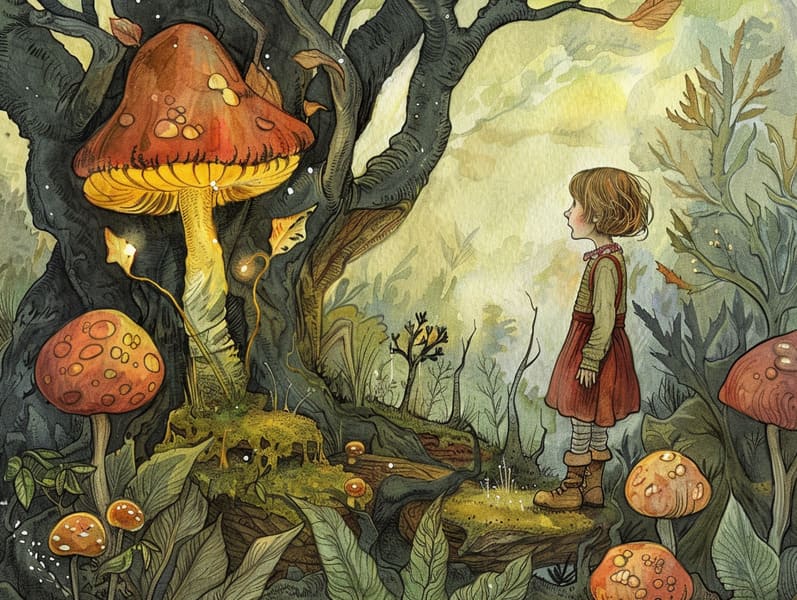Tracing the Heritage of Popular Fairy Tales with Their Perpetual Appeal.
Tracing the Heritage of Popular Fairy Tales with Their Perpetual Appeal.
Blog Article

Best fairy tales have old origins. These narratives have been spoken from one generation to the next ages before they were ever published. They developed from a variety of backgrounds, including Eastern traditions. They were initially narrated among elders, often carrying themes and messages pertaining to the societal norms and beliefs of the time.
The renowned Brothers Grimm, Jacob and Wilhelm (the Grimm brothers), were among the first to gather many of these beloved stories. Their compilation, "Grimm's Fables," included narratives like "The Story of Cinderella," "The Story of Hansel and Gretel," and "Little Snow White," which have since become hallmarks in the world of famous fairy tales. Similarly, the Danish author's fantastical narratives, such as "The Little Mermaid," and "The Duckling's Story," have stolen hearts worldwide, cementing their place in the pantheon of famous fairy tales.
Despite being ancient, these stories remain as significant as ever, especially as bedtime stories for kids. These fantastical tales are now available in multiple formats, including gorgeously illustrated books, captivating animations, and free fairy tales online.
Their continued relevance can be linked to several magical reasons:
Crucial Morals: Traditional fairy tales often teach important moral lessons. Tales like "The Wolf and the Liar" teach the importance of truth, while "The Hare and the Tortoise" highlight the values of resolve and modesty. These tales offer young ones clear distinctions between virtue and vice, shaping their moral compass in a tender yet significant way.
Kindness and Comprehension: Ancient fairy tales frequently showcase heroines facing problems and hurdles, fostering kids to empathize with their struggles and support their triumphs. For instance, "The Tale of Beauty and the Beast" highlights the value of looking beyond appearances to see the real character of a individual, nurturing compassion and understanding.
Cultural Awareness: Many timeless fairy tales are deeply embedded in the cultural contexts from which they came. Reading these stories can provide informative snapshots into different historical contexts, strengthening a sense of cultural respect and discernment.
Imagination and Innovation: The imaginative elements in classic fairy tales—fairy godmothers—kindle children’s imaginations. These tales move readers to fantasy realms, invigorating creative thinking and a sense of fascination that remains a lifetime.
Traditional fairy tales are not only charming but also illuminating. They function as captivating tools in advancing various mental and emotional abilities in children. When old fairy tales are voiced, they nurture communication skills by introducing new phrases and sophisticated sentence structures. This practice also strengthens listening skills and attention, as young readers pay close attention, looking forward to see what happens next.
Furthermore, examining the themes and characters of traditional fairy tales can improve problem-solving abilities and cognitive skills. Children are guided to identify patterns, guess what will happen, and figure out cause and effect. These reflections also help little ones reveal their thoughts and feelings, cultivating their emotional intelligence.
In today’s technological era, the existence of web-based fairy tales has made these stories more obtainable than ever. Digital sites and online apps offer ample collections of children's fairy tales that can be viewed or heard anytime, anywhere. Fairy tales voiced are particularly widespread, featuring an interactive method for young ones to be a part of these bewitching tales. Sound books and voiced videos transport characters and settings to life, often enhanced by mesmerizing audio effects and background music that enrich the tale experience.
The lasting allure of ancient fairy tales lies in their ability to adjust to modern times while staying true to their underlying messages. Contemporary versions of these narratives often incorporate more inclusive figures and modern settings, making them relevant to today’s audience. However, the main ideas of daring, kindheartedness, and lawfulness remain unchanged, continuing to strike a chord with audiences of all ages.
Traditional fairy tales also offer a sense of ease and predictability. They extend a orderly narrative with a apparent beginning, middle, and end, often concluding with the resolution of conflicts and the triumph of good over evil. This regularity can be soothing for young readers, these guys bringing a sense of steadfastness in an dynamic world.
Traditional fairy tales continue to delight and instruct new generations, maintaining their appeal and value in modern society. As bedtime stories for kids, they confer a perfect blend of delight and instruction, furthering moral values, empathy, and creativity. The existence of online storybooks and the likability of fairy tales read out loud warrant that these timeless fairy tales remain attainable to new generations.
By maintaining and sharing these tales, we continue to admire the rich tapestry of cultural legacy and cultural heritage. Whether you are reading a artistically illustrated book, perusing a digital library, or hearing an narrated book, the spell of traditional fairy tales is always within reach. These fairy tales illustrate of the unending strength of narratives and its ability to bond us across centuries and lands.
If you are enjoying a colorful picture book, enjoying a online collection, or playing an voice book, the mystique of bedtime fairy tales is always within reach.
These narratives demonstrate of the timeless influence of storytelling and its ability to link us across generations and cultures, creating a bond that delights and instructs alike.